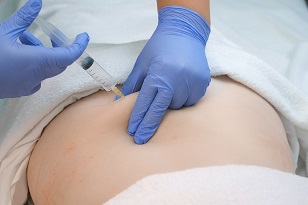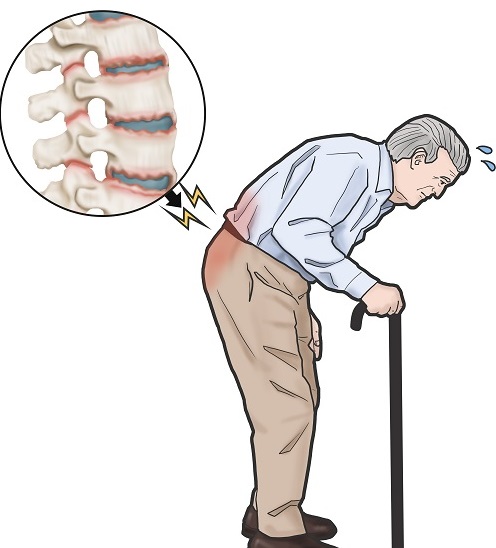Facial paralysis (facial nerve paralysis) (FSP) is the nerve whose function is most impaired within the cranial motor nerves. Facial paralysis typically includes weakness in unilateral facial muscles, sagging in the forehead and mouth corner, asymmetry in the face, and difficulty closing the eyes and mouth. Decreased taste sensation/loss, tears or changes in the secretions of salivary glands may also be observed. It may be accompanied by earache or hearing difficulties.
What are the causes of facial paralysis?
Facial nerve paralysis (FSP) can occur due to many causes such as congenital, neurological, metabolic, toxic, neoplastic, infectious, traumatic, iatrogenic and idiopathic. However, approximately two-thirds of FSP does not have cause and is called "idiopathic". Idiopathic fascial paralysis, also known as Bell paralysis (BP), is the most common type of FSP.
Who has facial paralysis?
Bell paralysis usually occurs in people between the ages of 15 and 45 in the ratio of 10-40:100,000. Although the incidence is equal in men and women, the risk increases three times during pregnancy, especially in the third trimester or in the first week after childbirth. 5-10% of patients are patients diagnosed with diabetes. In addition, stories of upper respiratory tract infections such as influenza and flu, tooth extraction, air-conditioned or windy conditions have also been reported by patients.
Does facial paralysis require further examination?
Determining the cause of fascial nerve paralysis is very important in terms of determining the treatment plan and prognosis. For this purpose, the patient's history and physical examination findings are of great importance. The onset, duration, rate of progression, recurrence and familial characteristics of facial paralysis, accompanying symptoms, past surgery and important diseases give an idea of the cause and prognosis of paralysis. For example, in paralysis that continues to progress after the first 3 weeks, tumors should be considered in differential diagnosis. Bell paralysis can usually be diagnosed by anamnesis and physical examination without the need for laboratory tests and imaging methods. However, various topographical (Schirmer test, taste test, saliva secretion test), electrophysiological (nerve stimulation test, electroneuronography, electromyography (EMG) and radiological imaging methods (computed tomography and magnetic resonance imaging) can be used to determine the etiological factor, prognosis, level of lesion and to establish the treatment plan.
How to treat facial paralysis?
Since there are not enough studies on the treatment of fascial paralysis, discussions about treatment are still ongoing. The most important goal of treatment is to accelerate healing, ensure that the recovery is near full, prevent eye complications and other possible sequels, and inhibit viral reproduction. It is also important for the patient to receive psychological support and to follow up with regular checks.
There are two important points in determining the treatment protocol. One is the correct localization of the location of the lesion, and the other is the exact determination of the degree of damage to the nerve.
The most common treatment options for Bell paralysis are drug therapy, physical therapy, injection and surgical treatment. Steroid and antiviral therapy are used in drug treatment. The patient's face should be protected from airflow and cold. The eye of the patient whose eye does not close must be closed, artificial teardrops are used every hour of the day, eye ointments are used at night. In physical therapy, infrared, ultrasound, low intensity laser, magnetic field therapy, massage, electrical stimulation are used, therapeutic exercises are of great importance. In patients who do not improve despite medical treatment and patients with degeneration above 90-95% in electrodiagnostic evaluations, successful results are present when surgical treatment is applied in the early period. Recently, neural therapy method neural therapy is also applied in treatment. In facial paralysis, which develops for other reasons, treatment should be performed for the cause.
RESOURCES
1) Diagnosis and Treatment Methods in Bell Paralysis. Dr. Tuba BAYINDIR, Dr. Mehmet TAN, Dr. Erol SELİmOĞLU, ENT-Forum 2011;10(1).
2) Uludag University Faculty of Medicine ENT website
3) Effects of Electrical Stimulation on Functional Recovery and Complication Development in Peripheral Facial Paralysis. Hürrem Pelin YALTIRIK, Arzu Yağz ON, Jade KIRAZLI, Ege Fiz Medical Reh Der 2001; 7 (3-4): 73-82
4) Physical Medicine and Rehabilitation. Mehmet Beyazova, Jade Gokce Holy (Eds), 2011.
5) Peripheral Facial Nerve Paralysis: Location of FTR in The Referral Chain and Rehabilitation Results. EnginÇakar, OguzDurmuş, UmitDinçer, Mehmet Zeki Kıralp, JPMRS 2009;12:117-21.
.jpg)





